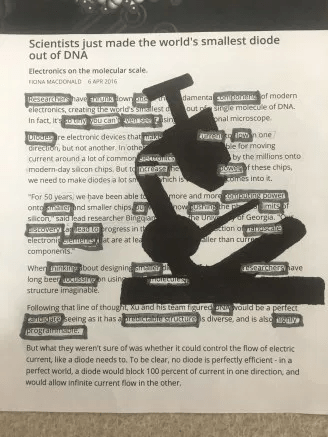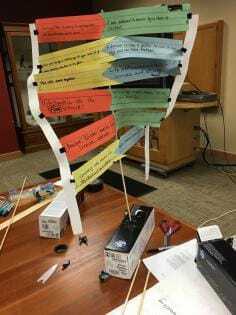Poets, scientists, and writing instructors in North Carolina created an online science camp for kids.
Bees use left-behind code to locate fresh pollen. Early humans left codes on cave walls about their lives. Navajo code talkers encrypted messages that saved thousands of men in the Pacific theater of World War II. And, of course, software engineers write the web with today’s computer code.
Learning to code has become a rite of passage for children today. Afterschool programs, online courses, and hackathons all offer kids the chance to learn HTML and other computing languages. But coding can be more than a “how-to” course. That’s what Intersection partners in North Carolina believed, at least.
Over the course of two years, more than a dozen area educators, members of the Tar River Writing Project in North Carolina, four poets from the Sacrificial Poets and The Poetry Project, and six scientists from the North Carolina Museum of Natural Sciences met to develop innovative online programming that combined science, coding, social media, and poetry.
The goal was to create an online site where kids could follow videos, watch demonstrations, and use other resources to learn to code and develop science and writing literacy. The Massive Open Online Course (MOOC) was called Remix, Remake, Curate. The youth would progress through online projects, leveling up to more challenging work while having fun. More than 500 young people eventually took part in the projects.
As the team wrote in its final report on the project, “We looked for cross-cutting concepts that are shared by scientists and writers, particularly our poets. For example, we identified concepts such as patterning, accuracy, [and] cause and effect structures,” which are, as they noted, “important disciplinary literacies for both scientists and poets.”
Together, the team developed projects ranging from teaching kids to use beads to spell out their name in code (blue beads = A, white beads = B, etc.), which they then made into bracelets, to breaking codes and ciphers, to exploring DNA (the ultimate code), to writing code-as-poetry. The sessions were online and included video or other digital instruction and a space for kids to ask questions, find inspiration, and display their final projects. Every few weeks, a new course was posted.
“Team members had developed the capacity, relationally, to act together. Their various positions of expertise were both drawn upon and challenged, enabling them to move collectively towards a rethinking and redesign of online science programming that would meet the needs of teachers and young people.”
So what did the kids create?
When learning about DNA, kids extracted the DNA from strawberries and read about cloning. They then got creative with their own cloned animals, like this one:

Poets challenged students to create a message to the world in six words (and then share it with the world in HTML). A scientist and poet collaborated on an exercise to extract DNA from a strawberry and then extract poems from articles about DNA.

Another exercise asked students to write and assemble a poem that served as a 3-D model of DNA.

The collaboration itself turned into a learning process for the adults. Although they brought their own expertise to the task, they needed to incorporate the expertise of others.
They were entering new territory. Although each group had cursory experience with the others—scientists and poets, for example, are often invited into schools to offer one-time activities—they rarely had opportunities to engage as equal partners. Over time, however, relationships deepened, and the collaboration enriched the experience for all.
By the end, “team members had developed the capacity, relationally, to act together,” the leaders wrote in their final report. “Their various positions of expertise were both drawn upon and challenged, enabling them to move collectively towards a rethinking and redesign of online science programming that would meet the needs of teachers and young people in our region and beyond.”
Visit the Remix, Remake, Curate blog for more information.
